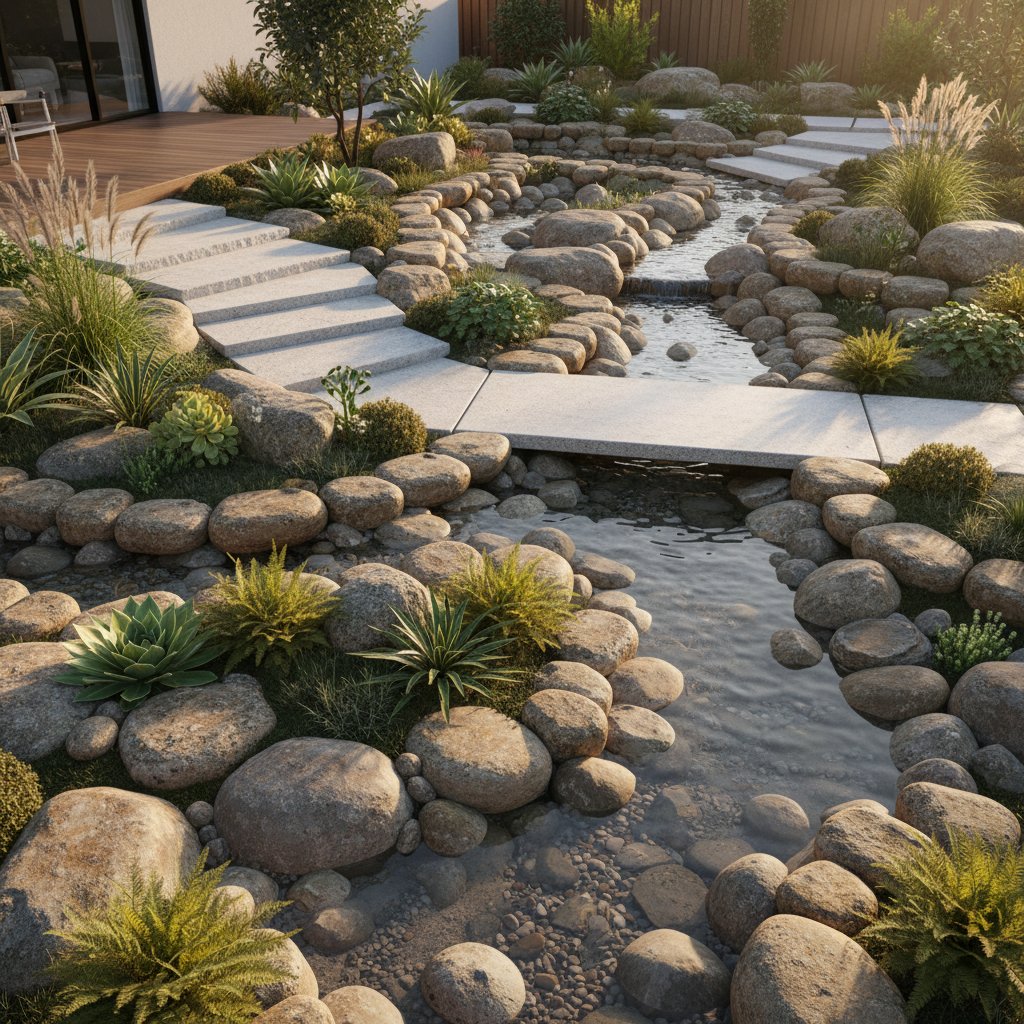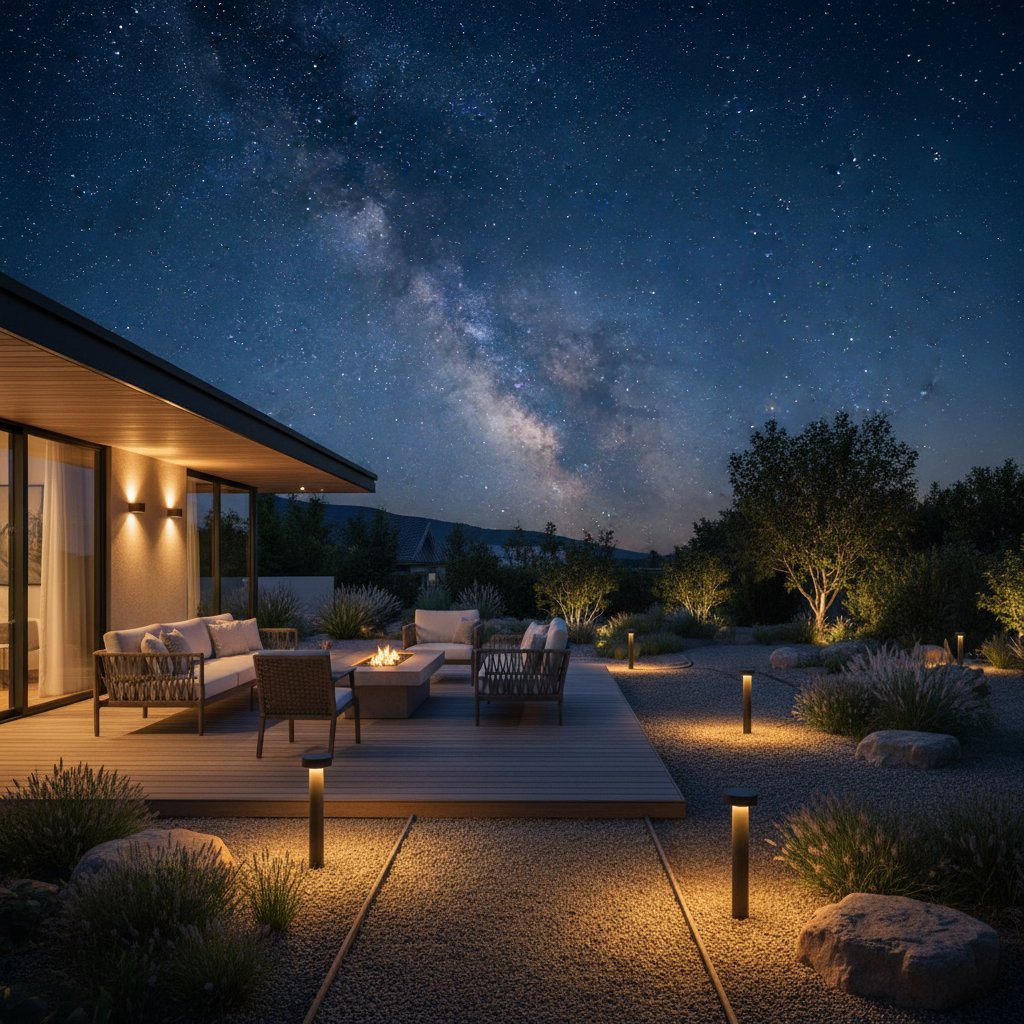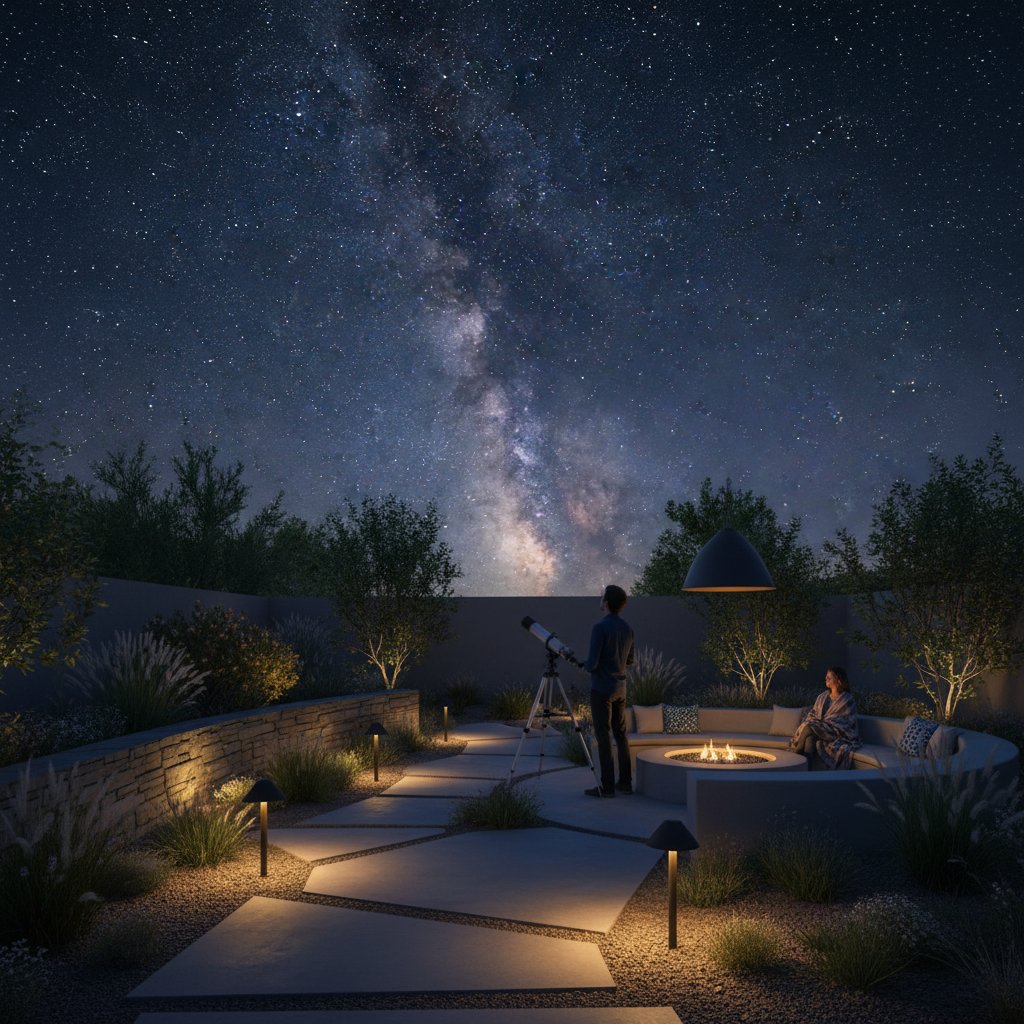Transform Stone into Natural Havens: Biophilic Design in 2025
Gardens often transcend mere projects to become intimate dialogues with the earth. Sunlight grazing rough granite surfaces, water gliding over slate, or moss contrasting limestone edges all cultivate profound calm. This resonance arises from biophilic design, a philosophy that incorporates natural materials, textures, and patterns into constructed settings. Intentional application renders stone not merely structural but integral to the landscape, linking human presence with untamed elements.
Understanding Biophilic Design in Landscapes
Biophilic design fundamentally strengthens the human-nature bond. It fosters environments that pulse with vitality, where tactile qualities, auditory cues, and visual prospects evoke the organic realm. In garden contexts, this manifests tangibly through the sandstone grain, river rock chill, or eroded contours of reclaimed pavers.
Though the terminology appears contemporary, its principles endure across eras. Ancient courtyards, stone terraces, and water gardens embodied similar aims of equilibrium, weaving nature's serenity into routine existence. Modern adaptations of biophilic design temper environments, converting unyielding substances into fluid, restorative compositions.
Stone as a Vital Component
Stone conveys permanence, yet harbors inherent dynamism through its textural records of time, thermal responses, and mineral veining. Within biophilic landscapes, stone engages dynamically with its surroundings, absorbing solar heat, channeling precipitation, and acquiring patina that narrates environmental history.
Select stone varieties to evoke specific atmospheres:
- Granite provides stability and resilience, suiting expansive areas or pathway delineations.
- Limestone delivers a subdued, tactile softness, harmonizing with grasses and ferns.
- Slate introduces layered depth and faint luster, enhancing light play adjacent to aquatic elements.
- Fieldstone imparts rustic authenticity, aligning with woodland or cottage motifs.
Prioritize the stone's intrinsic attributes to inform placement. Embrace variations in hue and form over uniformity; such diversity aligns with biophilic tenets of heterogeneity and genuineness.
Crafting Flow with Texture and Pattern
Texture animates stone profoundly. A polished granite bench scatters light unlike a rugged wall, each choice shaping the spatial mood. Opt for smooth finishes to impart contemporary elegance, or retain rough-hewn or tumbled edges for organic cadence.
Patterns subtly shape spatial perception. Precise alignments and snug joints convey order and precision. Conversely, irregular configurations like flagstone trails or cobble borders spark exploration and moderate traversal speed, mirroring meandering natural paths.
In biophilic hardscaping, evaluate pattern interplay with adjacent flora, earth, and illumination. A winding path amid native plant groupings differs markedly from a linear route beside manicured turf. Each configuration yields unique experiential outcomes.
Integrating Water, Stone, and Serenity
Water traversing stone seldom fails to instill tranquility, engaging multiple senses through cooled atmospheres, muted acoustics, and variable reflections tied to celestial shifts. A basalt-hewn fountain or river-stone-lined rill elevates compact gardens into refuges.
Biophilic principles advocate naturalistic water forms over rigid geometries. Employ time-worn contours and indigenous stone to anchor features contextually. Permit moss, algae, and lichen to colonize organically, preserving authenticity and evoking enduring narratives unattainable by fabricated alternatives.
Harmonizing Stone with Vegetation
Stone and plants interweave to define biophilic landscapes; isolation renders either incomplete. Stone offers enduring framework, while vegetation infuses dynamism and vitality, yielding cohesive ensembles.
Assess plant-stone synergies in texture and palette:
- Silver-foliaged herbs such as lavender or thyme temper dark stone, diffusing aroma from interstices.
- Grasses and sedges undulate near low retaining walls or gravel routes, contributing motion and whisper.
- Mosses and ferns flourish in shadowed niches, adhering to moist stone for primordial hush.
- Succulents embed in fissures, their forms resonating with stone's architectonics.
Foster emergent integrations over meticulous orchestration. Encourage overgrowth or self-sowing in voids to simulate autonomous evolution within structured intent.
The Emotional Resonance of Stone
Stone manipulation balances utility with evocation. A modest wall delineates zones yet beckons repose or skyward contemplation. Stepping stones spanning a shallow pool convert passage into meditative pause.
Stone's emotive potency stems from its evocation of persistence and succession. It underscores landscapes' incremental transformations beyond human oversight. Sourcing and applying stone mindfully engages broader narratives, transcending ornamentation to forge intergenerational nature-human dialogues.
Equilibrating Organic and Intentional Elements
Biophilic gardens emerge from deliberate curation rather than haphazard wildness. Optimal outcomes arise from observant moderation, merging innate aesthetics with practical accessibility.
Apply these principles for integrated cohesion:
- Reiterate materials for cohesion, employing identical stone across walkways, walls, and seats.
- Diversify textures for engagement, juxtaposing coarse stone with fine gravel or cool grays against warm beiges.
- Incorporate asymmetry to echo natural irregularity, eschewing symmetrical rigidity.
- Utilize stone borders or low walls to direct vistas toward arboreal, aqueous, or expansive horizons.
Subtle modifications, such as path realignments or wall height adjustments, profoundly alter ambiance. Aim for inviting ease over flawless symmetry.
Contextualizing with Local Materials
Regional geology informs authentic landscapes; indigenous stone deepens site-specific ties. Coastal settings favor eroded granite, while prairies suit limestone or sandstone, often mirroring native flora in tonality and tactility.
Sourcing proximally minimizes transport emissions and enhances perceptual unity. Though unarticulated, observers intuitively register the alignment of stone, terrain, and luminance, amplifying innate harmony.
Extending Biophilic Principles Indoors
Originating outdoors, biophilic design seamlessly permeates interiors. Exterior stone in patios or paths transitions to indoor flooring, accents, or sills, dissolving boundaries between realms.
Envision progressing from a slate terrace to a kitchen featuring matching backsplash or counters. This fluidity sustains nature immersion amid domestic confines, ideal for fluid layouts, solaria, or light-abundant zones.
Prioritizing Sustainability for Enduring Appeal
Stone's allure includes its durability; unlike composites prone to degradation, premium stone matures elegantly, accruing depth through darkening, textural evolution, or biocolonization. Select ethically procured, robust varieties to advance ecological and aesthetic longevity.
Reclaimed stone suits biophilic endeavors, its patinated history curbing discard while pairing with natives and porous surfaces for biodiversity support.
Maintenance preserves vitality sans artificiality: mild cleansing, periodic stabilizations, and vegetation oversight suffice for sustained allure.
Embracing Ongoing Landscape Evolution
Established biophilic landscapes reward through perpetual adaptation. Precipitation enriches stone tones, flora expands, and seasonal light reshapes scenes, positioning the garden as collaborative entity.
Inhabitants frequently note escalating serenity and affinity. Barefoot traversal of flagstone or pondside lingering integrates into routines, evolving materials into land's authentic extensions.
Initiating Your Biophilic Journey
Commence modestly with a stone bench amid grasses or a gravel trail bordered by natives to initiate shifts. Monitor diurnal variations in sensation and utility.
Progress incrementally: introduce a retaining wall or scattered steppers, selecting locale-attuned materials resonant with architectural ethos. Integrate additions gradually, assessing integrations before expansions.
Such gardens surpass visual charm; they recalibrate equilibrium, affirming humanity's niche in nature's tapestry. Treating stone as dynamic conduit unlocks yards' potential as profound retreats.



